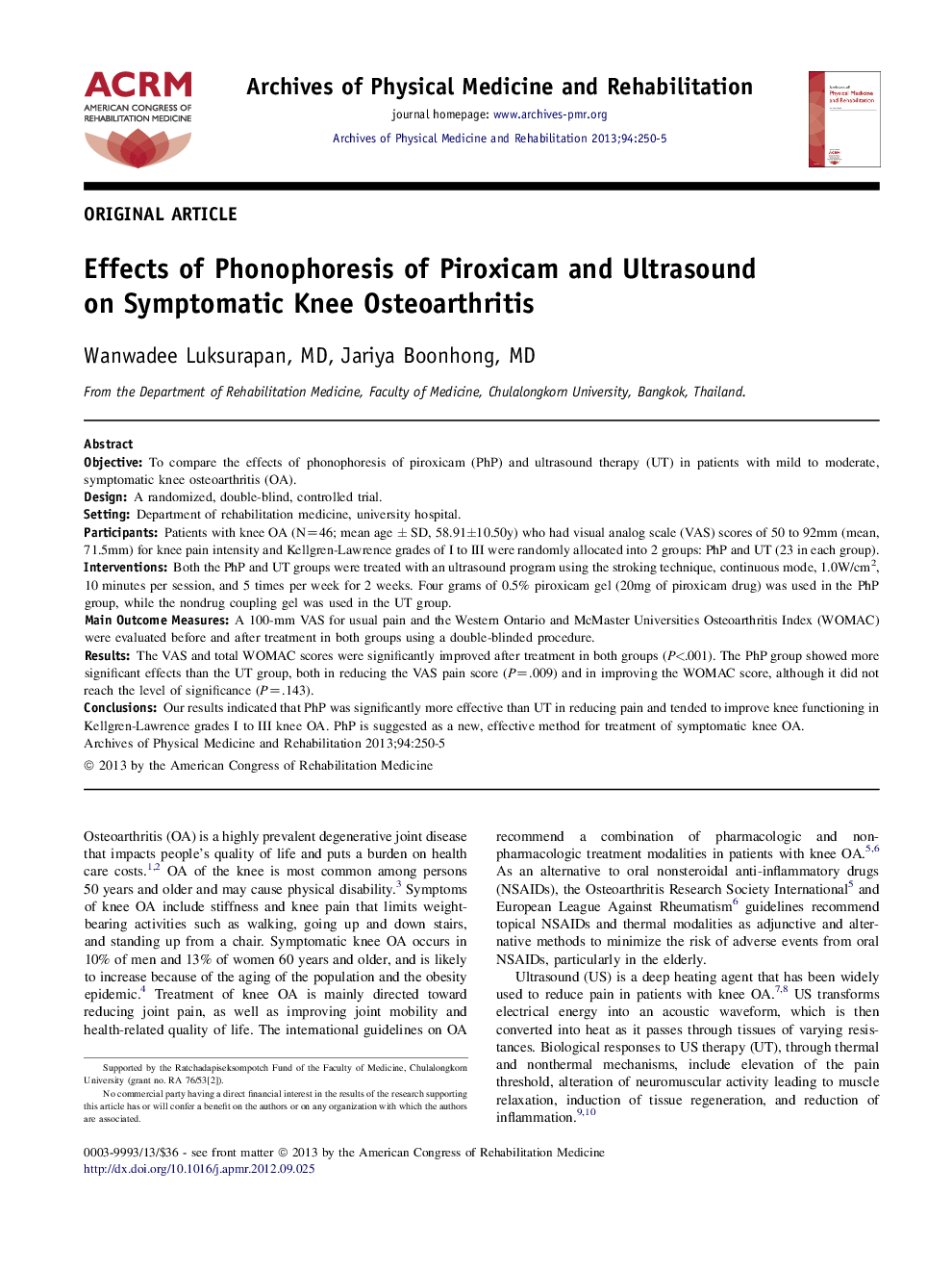| Article ID | Journal | Published Year | Pages | File Type |
|---|---|---|---|---|
| 3448898 | Archives of Physical Medicine and Rehabilitation | 2013 | 6 Pages |
ObjectiveTo compare the effects of phonophoresis of piroxicam (PhP) and ultrasound therapy (UT) in patients with mild to moderate, symptomatic knee osteoarthritis (OA).DesignA randomized, double-blind, controlled trial.SettingDepartment of rehabilitation medicine, university hospital.ParticipantsPatients with knee OA (N=46; mean age ± SD, 58.91±10.50y) who had visual analog scale (VAS) scores of 50 to 92mm (mean, 71.5mm) for knee pain intensity and Kellgren-Lawrence grades of I to III were randomly allocated into 2 groups: PhP and UT (23 in each group).InterventionsBoth the PhP and UT groups were treated with an ultrasound program using the stroking technique, continuous mode, 1.0W/cm2, 10 minutes per session, and 5 times per week for 2 weeks. Four grams of 0.5% piroxicam gel (20mg of piroxicam drug) was used in the PhP group, while the nondrug coupling gel was used in the UT group.Main Outcome MeasuresA 100-mm VAS for usual pain and the Western Ontario and McMaster Universities Osteoarthritis Index (WOMAC) were evaluated before and after treatment in both groups using a double-blinded procedure.ResultsThe VAS and total WOMAC scores were significantly improved after treatment in both groups (P<.001). The PhP group showed more significant effects than the UT group, both in reducing the VAS pain score (P=.009) and in improving the WOMAC score, although it did not reach the level of significance (P=.143).ConclusionsOur results indicated that PhP was significantly more effective than UT in reducing pain and tended to improve knee functioning in Kellgren-Lawrence grades I to III knee OA. PhP is suggested as a new, effective method for treatment of symptomatic knee OA.
